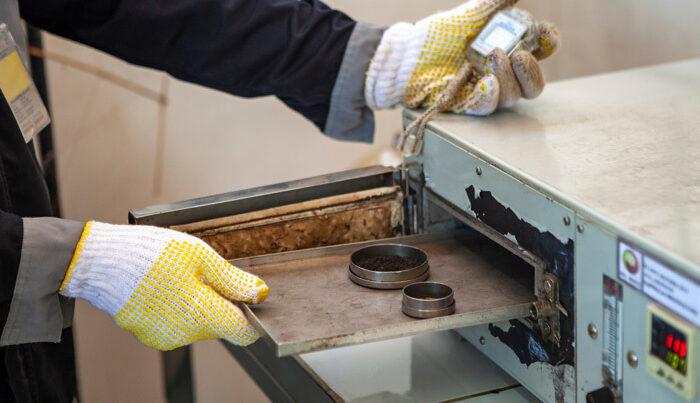Human History, Ahoy! Coal on Black Beard’s Ship Tells a Story

By Rod Hatt, President and Chief Technical Officer, Coal Combustion Inc.
The Center for Coal and Archaeology (CCA) was founded in 2003, as a part of Coal Combustion, Inc. The CCA recognizes that coal and slag samples are human artifacts — they were mined, shipped and burned by people. Cooking, heating, blacksmithing, smelting and steam power all involve fuels like wood and coal. Coal petrography, along with proximate and ultimate coal tests, helps us pinpoint coal rank and potential sources. Coal has been mined in the USA since early colonial times, with the first operations starting in 1748, just outside Richmond, Virginia. There is potentially a historical record of many coal transactions taxed at ports.
This historical record, with archaeologically derived samples, could lead to additional knowledge of human interactions and the role that coal played in who we are. A sampling issue, with archaeological coal samples, is that coal left in open air will decompose over time. This limits us to marine-derived, or shipwreck samples, that have been preserved underwater.
CCA obtains most of its coal samples from underwater ships, and it’s well preserved underwater, as oxidation degrades coal. The CCA’s goal is to expand its database of known coal samples and analyses specific to a time and/or place. In the U.S., coal type changed over time, as the railroads progressed up the mountains. Knowing where a coal sample is from might help determine when it was mined. CCA funds its projects from industry and academia’s donations of time, analysis and money, with the goal of adding to our database from multiple sources.
One of our early projects was with the Denbieh, an 1860s blockade runner found in Galveston, Texas. This ship fueled up for its last run in Cuba, with WV/PA low volatile coal that could make near smokeless combustion. If you were the captain of this ship, would you ensure it was low volatile? Smokeless coal is just the type a ship trying to avoid detection by the U.S. Navy would want to use. There was also a rum bottle hidden away in the coal bin, just the thing a boiler operator going through a U.S. Navy blockade might enjoy.
CCA’s first archaeological project was with the CSS Hunley, the first submarine to sink a ship — the USS Housatonic. The Hunley was a hand-cranked ship with no coal on board. The coal was dated from the 19th century, so it is speculated that the large hole in the sub came after it sank. The lower level material was fine-grained and most likely leaked into the ship initially, then the hole, then the coal and slag.
Edward Teach, commonly known as Black Beard the Pirate, captured a merchant/slave ship in 1717 and renamed it the Queen Anne’s Revenge. Black Beard and his flotilla actually blockaded Charleston, South Carolina, in May 1718, mostly to obtain medical supplies. Some of these supplies were recovered from the shipwreck and included two types of syringes. A big one for stool removal — hard tack and rum, a soft stool do not make — and a smaller syringe, with a curved tip, which was used for putting mercury in the front side. Mercury was thought to cure syphilis, a common disease in pirate times.
Shortly after blockading Charleston, Black Beard ran the Queen Anne’s Revenge aground while entering Beaufort Inlet, but the shipwreck wasn’t rediscovered until 1996. Some say he was corporate downsizing his band of thieves. Black Beard was killed in action later that year, in November 1718. The Queen Anne’s Revenge Conservation Laboratory at the Office of State Archaeology, North Carolina Department of Natural and Cultural Resources, is where coal, slag and all the cool pirate stuff — the anchor, cannons and lots of ammo was found along with many other more personal items — has been recovered and preserved at.
Coal was found all over the shipwreck and the surrounding area. Coal slag was also intimately mixed in over the site. Each sample was labeled with location information, preserved and retained. This author worked with the conservationist to select a random sampling of the coal found at the site. These samples and the associated lab analyses and coal petrology are the basis of our paper, Queen Anne’s Revenge Coal Conundrum: Origins of Coal Found in Association with a Historic Shipwreck.
The problem with the Beaufort Inlet, the site of the Queen Anne’s Revenge’s wreck, is that just a few miles up the inlet was a U.S. Navy coaling yard used during the Civil War. From 1862-1864, over 400 U.S. Navy blockade ships made almost 500 total refueling stops in Beaufort, consuming up to 2,000 tons per month at peak. Dumping slag and cleaning coal off the decks was common practice just outside harbors to avoid dredging the harbor/ports of this debris. Our analyses and paper conclude that it was not pirate coal, but most likely coal from the Civil War-era Beaufort, North Carolina, coal refueling station.
The good news for me — many times, when you recover pirate treasure, you get the ghost of the pirate. I can only imagine what the ghost of Black Beard’s blacksmith or cook might be like hanging around the office.








